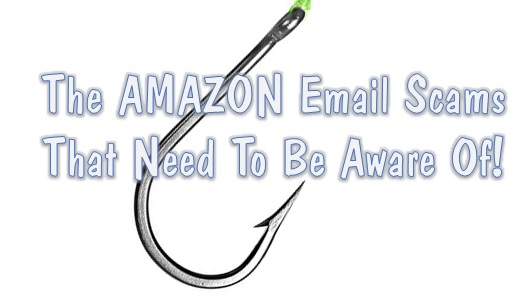
Today we are taking a look at Amazon Email Scams that are going around at the moment. This is a problem that seems to be affecting many of us. Online scams have always been a major issue since the dawn of the internet. But recently it would seem that the scammers have been trying to up their game. Email scams are becoming more convincing and the scammers are getting away with their crimes more than ever.
Recently, Amazon has been the target of many email scams. These scams are usually conducted via email and are designed to look very authentic. Today I would like to inform you about several Amazon email scams that are currently being sent out. In this post, I’m going to show you how to spot one of these scams and most importantly, how to avoid them.
Table of Contents
Amazon Email Scams – How To Spot Them
At the moment there are a couple of main scams that are being used to con people out of their money and personal information. These scams are designed to trick you into giving out sensitive information. The ultimate goal of the scammer is to get as much money out of you as possible. In order to do this, the scam artists have various ways to get you to click on links that install software on your computer, or they might lead you to a fake website designed to steal your personal information.
One thing that tends to stand out in a lot of Amazon Email scams is the fact that they don’t always read very well. Although the email may look very genuine, you should always try to look for clues such as bad spelling or grammar. Take a look at this example…
Amazon No Longer Keeping Personal Data Scam
In this example we see an email that has been sent out, stating that Amazon will no longer be keeping personal data for more than 6 months. One thing that stands out right away is the font used in this email. You will also notice the broken English and poor grammar used here.
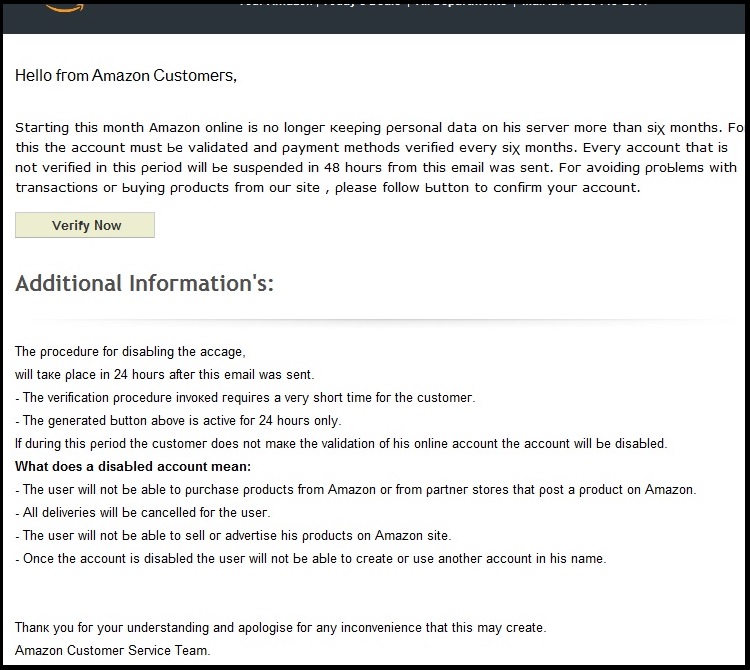
Many people fall for these scams because they are designed to make you take action. People receiving scam emails like the one above will often trust them as soon as they see a well-known logo. They also take action out of fear of losing their account. A closer examination of this email would no doubt alert most people to the fact that this could be fake. However, most people skim-read emails and follow the instructions given. Clicking on the “Verify Now” button on this email takes you to a page that looks exactly like the Amazon login page. However, the page that you are actually sent to is completely fake. The fake page is designed to steal your login information. Take a look…
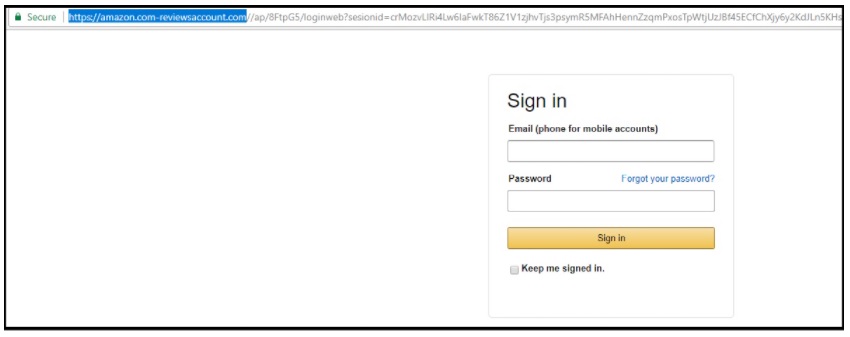
You will notice that this login page looks just like the genuine one. The only difference in looks here is within the URL that you are directed to. Please bear in mind that this is only an example. Chances are there will be many different versions of the same same, all with different URL’s.
Amazon Security Notice Scam
Another similar scam to the one above is the Amazon Security scam. Again sent via email, this scam attempts to gather login details by directing you to another fake login page. The only difference here is that the email claims to be from Amazon’s security team. The example below has been written much better than the above example, making this quite a convincing scam. Again people are led to take action here as they fear the loss or permanent suspension of their account.

More Examples Of Amazon Email Scams
In the examples below you will notice that Amazon email scams can come in all forms. Whilst some make claims of data theft, others try to convince you that you are entitled to a refund. Regardless of the story, each one of these scams is simply a further attempt at getting your Amazon login details.

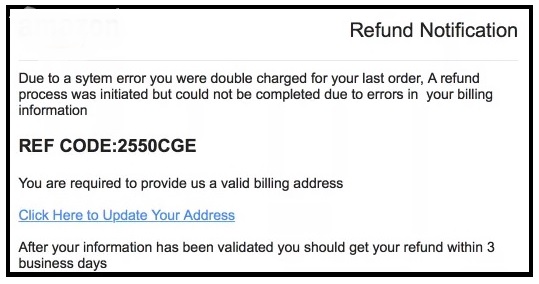
The Amazon Email Hoax Purchase Scam
Finally, one Amazon email scam that seems to be doing the rounds is the Amazon fake purchase scam. In this scam, you receive an email claiming that a purchase has been made on your account. The email states that if the purchase was not made by yourself, you should follow the provided link. Of course, the link provided on the email simply takes you directly to a fake login page where you are asked for your login information.
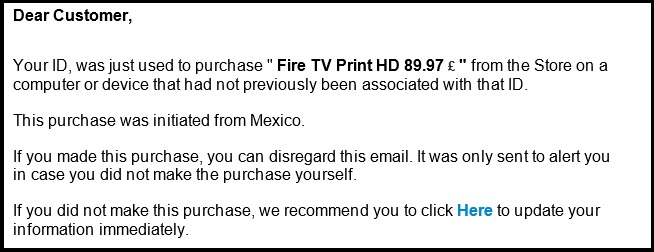
How To Spot An Amazon Email Scam?
As you can clearly see from the examples above, there are lots of different versions of the same scam. These scams change constantly and it’s not just Amazon that is being targeted. If you are in any doubt about an email that you receive, you should always contact Amazon directly. Always ensure that you log into the official website using the official URL and not via an external link.
If an email from Amazon has poor grammar, spelling mistakes or just doesn’t look official, chances are it isn’t. You can check any links within an email by “hovering” your mouse pointer above the link. If the link reads anything but an official link to Amazon, do not click on it.
In one of the examples above, we were directed to a URL that looked very similar to the official Amazon site, but on closer inspection, you will notice that it’s actually very different.

The above URL is given as an example of what to look for in a fake URL. We do not recommend visiting this URL out of curiosity!
Avoid Scams & Learn How To Earn Money Online
We hope that you found the information on our website useful. If this article helped you, why not drop us a comment before checking out more of what we have to offer. Here at MMOZ we show you how to avoid scams like the Amazon email scams above. But we can also teach you how to earn extra income online. Take a look at our Wealthy Affiliate review for our top recommedation on getting started.
You may also want to check out more scams here, or our growing list of internet marketing training articles.
Please share your thoughts regarding this article
If you have had any experience with Amazon email scams, hoax purchases or anything else related to the article here, I would love to hear from you. Please get in touch by dropping me a comment in the section below. Feel free to ask questions and share any experiences that you have experienced. Or simply say thanks if you found this post helpful in any way!
Thank you for your support!
i just received a message on my phone that said i had ordered a smart phone for 1,100 . i did not order that phone. my address is: 6504 n. montgall, kc,or”gladstone”, mo 64119. please check and correct this scam.
Hey there. Thank you for letting us know about this. Yes this certainly sounds like a typical email scam, especially as you didn’t order anything. Don’t follow any links that are shown on the email and never reply with any details about yourself. You didn’t say in your message but I’m guessing that the message that you received appears to be sent from Amazon right?